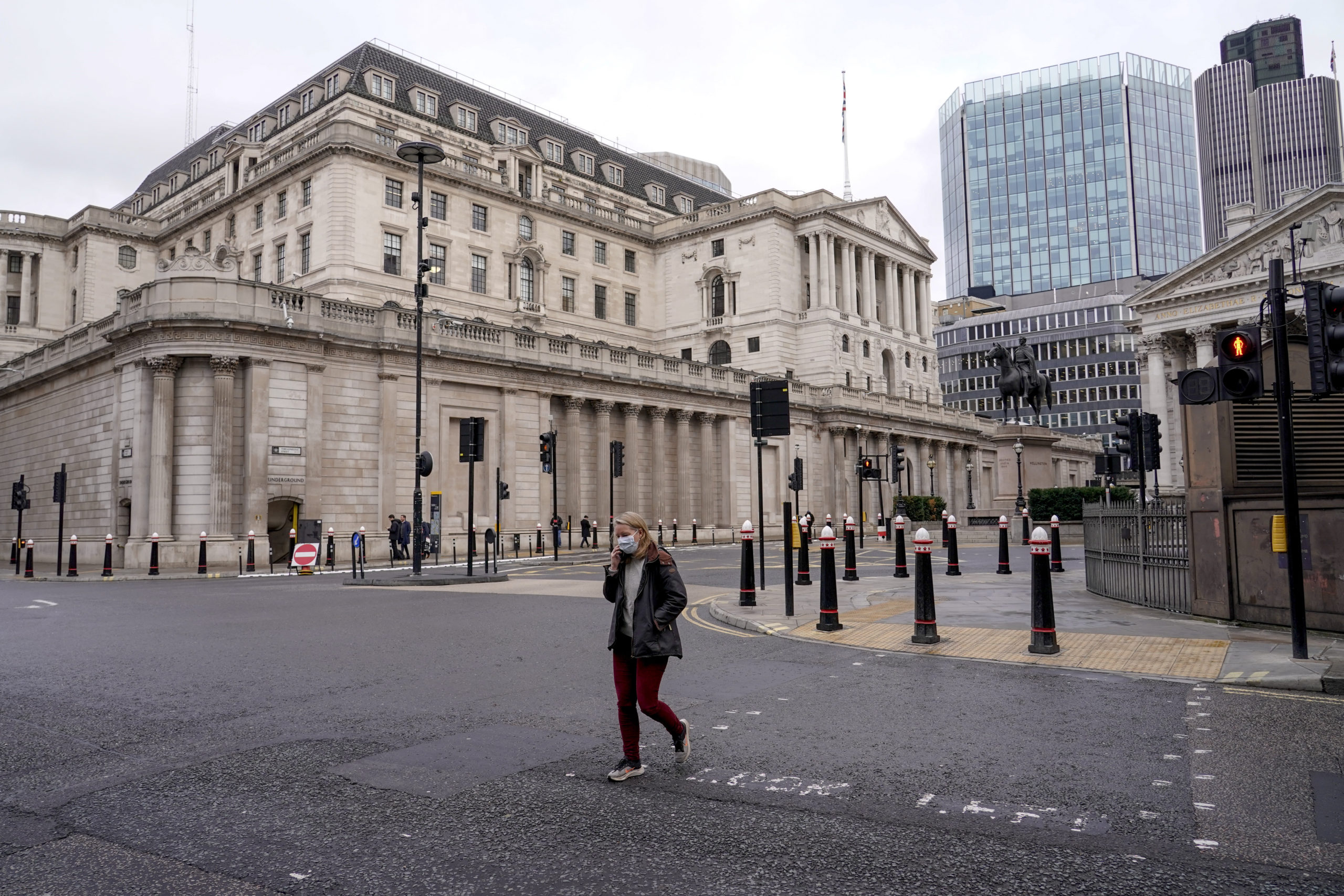LONDON (AP) — The Bank of England raised interest rates for the second time in three months on Thursday, putting the United Kingdom far ahead of the rest of Europe and the U.S. in moving to tame surging inflation that is squeezing consumers and businesses.
The bank’s monetary policy committee voted 5-4 to boost its key rate to 0.5% from 0.25%, with the dissenting members arguing for a bigger increase. It also voted unanimously to begin reducing the bank’s holdings of U.K. government debt and corporate bonds, which it had built up to bolster the economy since the global financial crisis more than a decade ago.
U.K. consumer prices rose 5.4% in the year through December, the highest inflation rate in almost 30 years. And the squeeze is only going to get worse: Britain’s energy regulator on Thursday announced a 54% increase in household gas and electricity prices in April, the same month income taxes are set to rise by 1.5%.
“Amid the global monetary policy regime shift from easing to tightening, the Bank of England is storming ahead, pressing forward with decisive action as a time when other central banks are falling behind the curve on inflation,” said Victoria Scholar, head of investment at Interactive Investor.
The U.S. Federal Reserve said last week that it would end its asset purchases in March and likely raise interest rates for the first time in more than three years. Monetary policymakers around the world are trying to contain inflation fueled by rising energy prices and supply shortages as the global economy recovers from the COVID-19 pandemic.
The Czech Republic’s central bank also raised rates Thursday. By contrast, the European Central Bank gave no indication it would hike rates this year despite record inflation in the 19 countries that use the euro. The bank’s president acknowledged that high consumer prices could linger for “longer than expected,” but policymakers decided Thursday to stick to a plan of carefully dialing back economic stimulus efforts this year.
With rate hikes come questions about whether they will aggravate the pressures on average people.
“If we don’t take this action, it will be even worse,” Bank of England Gov. Andrew Bailey told reporters.
Higher rates increase how much borrowers pay on everything from home mortgages to credit card purchases, reducing spending and slowing price increases. Lower rates tend to encourage spending and increase economic growth.
The Bank of England said it expects inflation to peak at around 7.25% in April. Based on that assumption, investors are betting the bank will raise its key rate to 1.5% by mid-2023.
The bank adjusts interest rates as it tries to keep the inflation rate below 2% while also promoting economic growth.
Meanwhile, the bank said it would gradually start reducing its holdings of U.K. government bonds and corporate debt held by financial institutions, initially by not reinvesting the money it receives from maturing bonds.
It began those purchases in 2009 to pump money into the economy during the global financial crisis. Policymakers were forced to turn to asset purchases after they had slashed interest rates to 0.5%, limiting their ability to use interest rates to stimulate economic growth.
With rates remaining near record lows, the bank continued to buy bonds during the shocks caused by Britain’s departure from the European Union and the pandemic. It is now the single biggest holder of U.K. government debt, owning 875 billion pounds ($1.19 trillion) of government bonds, known as gilts.
Sales of government bonds won’t begin until the bank rate rises to 1%. But the monetary policy committee said the bank should begin selling its 20 billion-pound stockpile of corporate bonds, continuing through late next year.
Some analysts suggest that financial markets should be able to absorb bond sales as long as the central bank moves slowly.
But Russell Silbertson, a strategist at the investment firm Ninety One, sounded a note of caution. The only central bank to embark on such a policy was the Federal Reserve in 2018-19, and it was forced to reverse course, he said.
“The bank’s decision to begin the process of shrinking their balance sheet … is a step into the unknown,” Silbertson said. “The bank’s actions therefore warrant close attention.”

